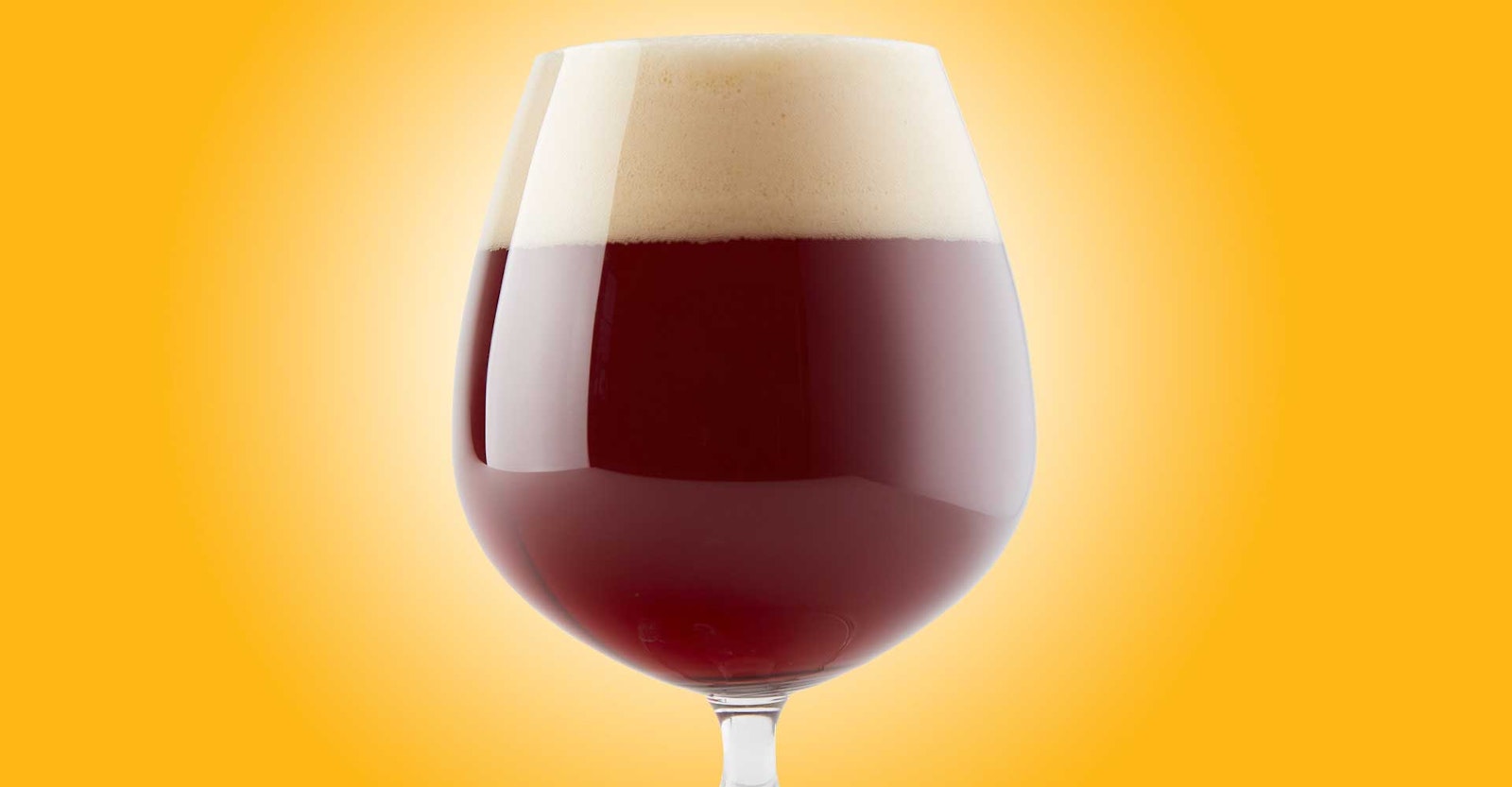This is a field-tested, quality-checked recipe in its fourth generation, and I’ve certainly drunk more than my share of the beers that inspired it (namely, Fuller’s 1845). Fresh and malty with noticeable English hop character in the nose and on the palate, this is one that’s well suited to crisp, cool weather.
Style: As a class, British strong ales are easier to define than others we could mention, such as old ales. They’re strong (obviously), not so aged (or old, as it were), and they’re flavor-forward. By that I mean that they’re both malt-forward and hop-forward. Strength is a key attribute—British strong ale is warmer than the stronger bitters, but it stops short of barleywine or old ale. It should be full-bodied, and that presents a choice when it comes to recipe construction.
Ingredients: We start with Maris Otter—nothing like a good English base malt for this style. To that we add some amber malt, plus lighter layers of aromatic, crystal 45, crystal 90, and Special B to increase body and add the “sugary” flavors we need. Now, about that choice I mentioned: To molasses, or not to molasses? An earlier version of my recipe included molasses, and it brought out nice burnt-sugar notes—but it also made the beer seem too thin for my liking. I mention it as a consideration. Having such a large percentage of crystal malts doesn’t concern me much because I want that thick mouthfeel, and I’m not so worried about oxidation in a beer that I enjoy drinking young.
Hopping is important, but not complicated. Get enough East Kent Goldings into the boil for a firm, balancing bitterness, flavor, and another hit in the whirlpool for that earthy, floral aroma. For yeast, I like Wyeast 1318 London Ale III because I use it a lot and I’m comfortable with it. However, I’ve also brewed this with the Ringwood strain (Wyeast 1187), and the strawberry-pear esters it added were a lot of fun—just something else to consider.
Process: You can mash a bit warmer here to add body, but I find that all those specialty malts do enough of that, so I do my usual 152°F (67°C). If you are adding molasses, do it while running off into the kettle and stir to dissolve before turning on direct heat. Pay attention to initial fermentation temperatures here. To avoid unpleasant diacetyl, start low, allowing the temperature to free-rise later to finish out. Finally, keep the carbonation relatively soft, but not so soft that it feels thin.
Keep playing with this recipe to make the beer you want. There’s a lot of room for interpretation—I’ve tried out treacle, flaked barley, oats, and Belgian candi syrup in various iterations. Just be sure to give those hops a chance to shine. You can cellar it until winter if you want—but it’s also really fun as a fresh beer.

